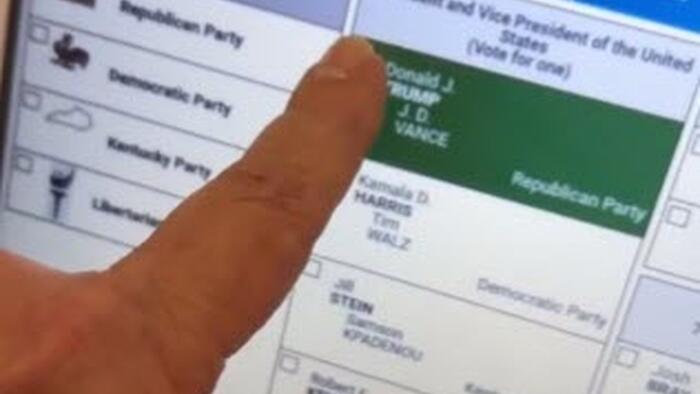On October 31, 2024, a video surfaced showing voters in Kentucky experiencing problems with an electronic voting machine that incorrectly registered votes for Kamala Harris when selections were made for Donald Trump. The situation quickly went viral, sparking significant public concern about the integrity of electronic voting machines. Many began to question whether such issues were isolated or part of a larger trend, with calls for a return to paper ballots gaining momentum. Online discourse around the incident reflected skepticism towards electronic systems, especially when incidents appeared to bias one political direction, suggesting a pattern that favored certain candidates over others.
As the video gained traction, the voter who recorded the incident reached out to local election authorities, including the head of the election board, and promised to escalate the issue to the Kentucky Attorney General. Initial reactions to the claims suggested that there was either a malfunction with the machine or a conspiracy to misrepresent the situation. The situation escalated when the Laurel County Clerk, Tony Brown, initially denied the issue but later confirmed that a malfunction occurred, admitting that certain actions on the machine could lead to erroneous selections.
The county clerk’s subsequent statement clarified that the voting machines in question were classified as “ballot marking devices.” These devices were designed for voters to insert their blank ballots, select their choices, and receive confirmation before finalizing their vote. The clerk emphasized the importance of double-checking selections, asserting that voters would see their choices displayed and could correct any mistakes before completing the process. This clarification, however, did little to quell suspicions about the reliability of electronic voting technology.
The Attorney General’s office took the matter seriously, sending representatives to verify the issues reported. After investigation, they confirmed the malfunction but noted that the voting device was programmed to respond only to specific touch inputs within the name boxes. This nuance led to confusion, with speculation that misunderstanding of the machine’s operational features could have contributed to the perceived voting error. Despite this, the public’s trust in the electoral process came under scrutiny, particularly amid concerns about electronic voting reliability.
Throughout the aftermath of the incident, discussions flared concerning the need for technological integrity in voting systems, with many advocates insisting on the reintroduction of paper ballots as a more reliable alternative. Critics pointed out that instances of technological glitches tend to disproportionately impact votes for certain candidates, which fueled narratives of bias. The repeated failures of electronic systems during critical voting periods raised alarms among voters and watchdog organizations alike, leading to intensified debates on election security.
In the heart of the matter, local authorities expressed their commitment to maintaining the integrity of the electoral process in Laurel County, lamenting the incident but assuring citizens of the safeguards in place. The hope was that incidents like this would motivate voters to engage actively in the electoral process, reinforcing the idea that every vote matters in a functioning democracy. Ultimately, the situation exposed vulnerabilities in the voting system, igniting discussions not just about technology in elections but about trust, transparency, and the future of electoral practices in the United States.

